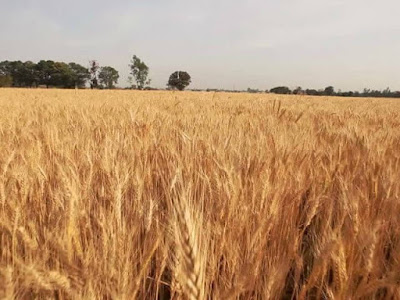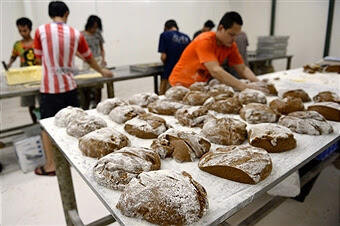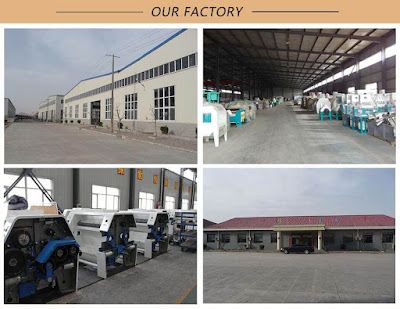Almost all the junk foods we eat these days are made from flour; Cake, Burger, Pizza, Doughnut, name them, are all made from flour. There are different types of flours and each of type of flour is dependent on the raw material used to produce the flour.
For instance, wheat flour is made from wheat, corn flour is made from corn/maize; then there are others like rice flour, cocoyam flour and yam flour and my guess is that you know the raw materials each of these types of flour are made from.
Starting a flour company is a very profitable business that can break even after a few years due to the high demand for flour by companies that use flour as raw material to produce other finished products.
Are you planning to start a small scale flour milling business? Well, starting and running a milling business is not an easy task. Despite the high returns that this business can yield at the end of the day, there is a lot that you need to do in order to rise to the top. There are a number of things you need to know before opening the doors of your small scale flour milling business in any part of the city. Here are simple steps that will get started without going through much hassle over the same.
The Plan of Starting a Flour Milling Business
1.Training on How to Handle the Machineries for Production
Unless you have worked in a flour mill before now, you need to get the basic training on how to handle the machineries used in the grinding and further production of the raw materials into finished flour. You also need to know other ingredients that are added to get the final result.
2.Register Your Business as a Company:
You may not start out as a massive flour mill, but you have a dream of expanding the company to a flour mill one day, so you need to register your business as a company; preferably a limited liability company. This also gives you the privilege to patent any new flour product you invent to your company’s name.
3.Lease a Space for Your Factory
When you are done with the formal registration, you have to look for a space to buy or rent as your factory complex. A basic flour mill doesn’t require much space to get started.
You need mainly a place to keep the raw materials, a space for your machineries, a space to keep the processed flour for packaging, and the space for the final packaging of the flour. The location of the factory should be easily accessible for easy transport of raw material into the site and easy shipping out of packaged flour to customers.
4.Purchase Equipments and Materials
Once you get the space for the factory, it’s time to buy the equipments and machineries you will need for production. Part of the need for going for training is to know which equipments are vital for the product of flour and how to use each of them. You can also lease machineries if the company is running on a very tight budget, but endeavor to purchase your own set ones you make enough money.
5.Source for Raw Materials
It is time to scout for raw materials you need for production. As I mentioned above, the raw material you will need depends on the type of flour you are producing. A good place to source for raw materials is from farmers that cultivate the raw materials in commercial quantities.
If you have the extra expanse of land, you may decide to cultivate your own raw material which may be cheaper but more stressful with the whole cultivation, nurturing, waiting to mature and finally harvesting processes. So it is much better to purchase from farmers.
6.Find Customers for Your Products
At this stage, I assume that the first set of flour production has been done and packaged; so you have to look for buyers for the finished product.
A good way to do this is to get a list of bakeries, food processing companies and pharmaceutical companies near your location; write a proposal to them that you have a flour company that can supply them with any quantity of flour they require.
Also include a small sample of the flour you made to them for them to see the product you have and finally, let them know that you can produce other types of flour on order (if you have the equipment to produce various types of flour).
This is all you need to know about starting a flour production mill. Please note that you need to get certification from the organization responsible for checking the quality of food products in your location, as it will help to increase the authenticity of your product to your customers.
Also, remember that the packaging process includes using a bag or sack that is branded with your company’s name and logo to package your flour; as this helps to advertise your products to anybody that comes in contact it.
Here are some basic requirements of plant & machinery
- Bucket elevator
- Drum sieve pre-cleaning machine
- High-frequency vibration cleaning sieve
- Wheat cleaning & drying machine
- Destoner
- Wheat scourer
- Permanent Magnetic Drum
- Atomizing Dampener
- Pneumatic flour mill machine
- Flour cleaning machine
- Plansifter
- Square plansifter
- Bran scourer
- Bran Brush Machine
- Centrifugal fan
- Pulse dust collector
Generally, a flour mill project comes with a lot of customization. According to your investment capacity and desired output quantity, you must install the machinery. Additionally, you will need to have testing equipment and packaging machinery.
The production process of each item is little bit different. You can source the manufacturing technology from the Govt. department in exchange of certain fees. However, here we put basic steps of flour production.
First of all, clean the wheat grains thoroughly to remove dust, stone and other foreign matters. Then temper the grains before grinding by treating with water so that the bran is separated from the endosperm.
Crush the wheat between corrugated rollers (Break rolls). It is a long process and may contain several breaks. The stock contains pieces of endosperm and bran and the stock from the last break is principally bran.
The middlings contain endosperm, bran and germ which are then successively classified and some of the bran removed are sent to reduction rollers. These are smooth rollers, but like the break rolls they are graduated so that successive reduction becomes finer and finer.
After each reduction, sifters separate the flour, middling and stock. And you have to continue the process until you can remove the most of the endosperm as flour. Additionally, you have to separate the most of the bran in the sifters.
The major required raw material is wheat blended in different proportion. Additionally, you have to procure the packaging materials for flour mill business.
Zhengzhou Double-lion Grain & Oil Milling Machinery Co.,ltd. is dedicated in flour mills and flour milling lines design & manufacturing. Cooperating with Henan University of Technology (Former Zhengzhou Grain College) which have abundant talented person and science advantage, it has carried out the new technological research and application of oil machinery, flour milling machinery, coarse cereals machinery and feed machinery, etc., and transformed the latest scientific achievements into productive forces to obtain good social and economic benefit. Many foreign friends have established long-term cooperative relationship with us. Our company has wide milling machines range and competitive price, looking for sales agents overseas!
 |
Need guidance to build a maize flour plant? Please contact us, our engineer will give you professional guidance and suggestion.
Type: wheat flour mill machine, flour mill plants, small scale flour processing plant, corn flour mill machine, grain mill, maize machine. Get in touch with us.
How to Get in Touch with Zhengzhou Double lion Flour Mill Manufacturer
Email: info@zzdoublelion.com
Whatsapp: +8613849022317 (Sophia)
Wechat: +8613849022317 (Sophia)
Add:Lotus street NO.100,Hi-tech development zone, Zhengzhou, Henan, China.
How to Get in Touch with Zhengzhou Double lion Flour Mill Manufacturer
Email: info@zzdoublelion.com
Whatsapp: +8613849022317 (Sophia)
Wechat: +8613849022317 (Sophia)
Add:Lotus street NO.100,Hi-tech development zone, Zhengzhou, Henan, China.





